How to clean a well: a detailed analysis of 3 methods of self-cleaning
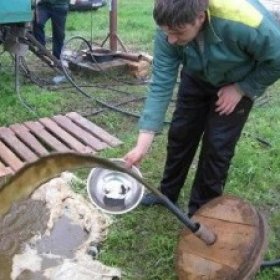
In country houses, wells are almost the only way to provide your family with clean water (not counting wells). But unlike central water supply, where special services monitor the quality of water, well owners have to take care of this themselves. And when the water becomes cloudy, and sand and silt settle at the bottom of the tanks, it becomes clear: the time has come to clean the well. The easiest way to do this is with the help of specialists. But they will have to pay for the work. However, there is an alternative: fix the problem yourself. Consider how to properly clean the well with your own hands.
A well requires constant monitoring of its condition, because in the early stages of pollution, the cause is easier to eliminate than when the water supply has completely stopped. It is better if preventive measures are taken at the first sign of clogging, i.e. as soon as you notice a sandy or silty sediment at the bottom of the dishes, and the pressure of the water has become weaker. At the same time, the crane can start snorting, letting out air and jerking water out, splashing the surrounding area. If you tighten the deadlines, it is likely that cleaning with folk methods will no longer help, and you will have to turn to experienced craftsmen with special equipment.
Content
Why is the well clogged at all?
Any, even very high-quality well is gradually clogged. There are several reasons:
- One of them is intermittent water withdrawal. This problem arises among summer residents who live outside the city only in the summer. During the autumn-winter, sediment from the silt particles, rust from pipes, sand brought with an aquifer accumulates at the bottom of the well ... And the less water is consumed, the larger the layer of debris settles at the bottom, gradually clogging the filters.
- The second common reason is pollution from the outside, when debris enters the mouth, soil from collapsing edges, etc.
- Clogging can cause soil movements, errors in the installation of the well. For example, if they put a filter with a diameter smaller than that of the pipe. In this case, the pump is obtained above the filter and does not pump water from the bottom. Circulation does not occur, and the filter gradually silts.

When cleaning the well with two pumps, one unit pours clean water into the pipe, and the second draws mud from the bottom
First compressor cleaning immediately after drilling
As soon as the well is drilled, it must immediately be cleaned, because not only water, but also all the garbage that is in it will enter the pipes from the aquifer. Installed filters cannot trap the smallest particles, from which the water becomes cloudy and unfit for drinking. Depending on the depth of the well, the flushing process after drilling can take from 10 hours to several weeks.
If drilling was done by specialists, then they flush the system using a flushing unit. If you drilled the well yourself, you will also have to clean it from dirt yourself. To do this, you will need a compressor with a capacity of at least 12 atm and several pipes that must be connected to each other and inserted into the well so that they reach the bottom. At the same time, the diameter of the pipes should be smaller than the diameter of the well so that there is an empty space between them.
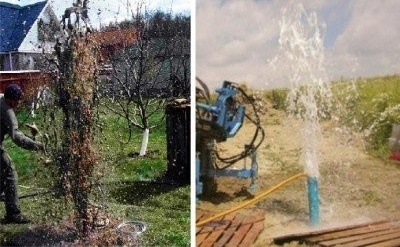
The compressor drives the air into the well under high pressure, so dirty water can fly out at a high speed and spray everything around
Consider step by step how to independently clean a well using a compressor:
- We insert the pipes into the well. It is advisable to strengthen the top with a rope, because under high water pressure the structure can protrude upward.
- We put a vacuum adapter on the pipe, fixing it with screws.
- Pump up the compressor to maximum pressure.
- Put the compressor hose on the adapter.
- We turn on the unit and release all the air into the well.
- Repeat pumping several times.
Air under pressure will push dirty water through the annulus. Therefore, do not be surprised if everything around is flooded with dirt.
If you did not achieve water purity with air, repeat the procedure, replacing the air purge with a water rinse, using the same pipe system with an adapter. To do this, find some large barrel, place it next to the compressor and fill it with water.
Using a water compressor, drive this water under maximum pressure into the well. But be careful, because heaps of dirt pushed by this water will fly at you. Clean the well until the tank is dry. Then flushing should be repeated until dirt no longer escapes from the annulus.
With the help of purging and washing, the well is cleaned of sludge or sand. But salt deposits on the filter cannot be knocked out in this way.
How to pump a well with a submersible pump?
A more accurate way to clean the well is with a submersible pump. You do not have to work in the mud, because all the water can be drained to a place convenient for you. For this procedure, you need a pump that is designed to pump dirty water. It is desirable that it can absorb solid particles at least up to 5 mm. Then you will remove not only sand, but also small pebbles from the bottom.
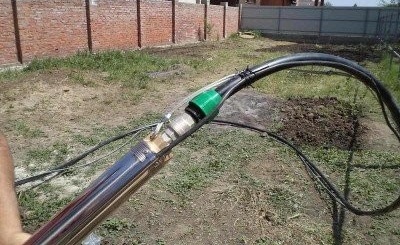
To clean the well, it is better to use a submersible pump, it is able to pump water with solid particles with a diameter of up to 30 mm
Consider how in the country you can clean the well using a submersible pump:
- We tie the pump to a strong cable, because during operation it can be sucked into the sludge, and the cord that comes with the unit will not always pull the pump out of this trap.
- We lower the unit a couple of times to the bottom of the well and raise it to stir the sediment.
- We install the pump near the bottom and turn it on.
- If the pump has automatic equipment, it will shut itself off as soon as it pumps out all the water. If there is no such element, you need to control the process so as not to miss the moment of complete pumping. A dry engine can burn out.
If you don’t have a special pump for pumping dirty water, you can clean the well with a conventional vibrating pump, such as “Baby”. The progress is exactly the same as described above. Only periodically should this pump be removed from the well for flushing with clean water. Vibration units are not designed for heavily contaminated water, so without washing they will not withstand such a test and burn out. By the way, the first sign that the pump is working on wear is a case heating.
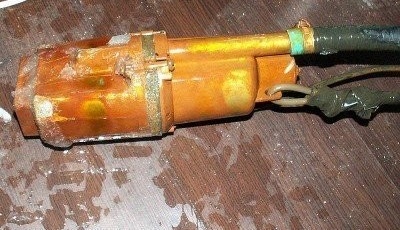
Vibration pumps are not designed for heavily contaminated water, therefore, when cleaning them, they must be washed periodically with clean water to avoid clogging and overheating
To flush the system, you will need a container with clean water and empty.Put the hoses in the tank and turn on the unit.
Chemical and bilge cleaning
If the methods of purging and flushing slightly increased the debit of the well, then the filters are clogged with solid layers of iron salts and lime. Knocking them out with pressure will not work. In this case, they resort to critical measures - acids. It is necessary to fill the bottom with ordinary battery acid, which is used for vehicles, after pumping all the water out with a pump. Acid is poured for 2 days, and the top of the well is tightly plugged with a plug.
When two days pass, water is pumped out of the well several times. But even after that, they are not used for drinking and cooking for a month, but only for construction or household needs. The more often water will be withdrawn, the faster the acid will be washed out of the well. And yet, before drinking water, it is better to take it to the laboratory for analysis. So you will receive an official confirmation of its safety.
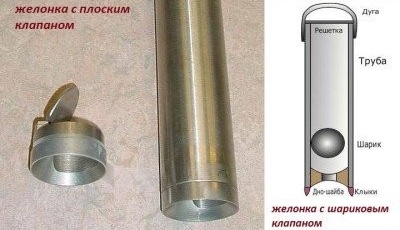
Cleaning a well with a finished or home-made baffle allows you to clean the well of all debris that has accumulated at the bottom, and not just sludge
Well proven do-it-yourself cleaning of the well with the help of a homemade chipper. How it works - the video below shows:

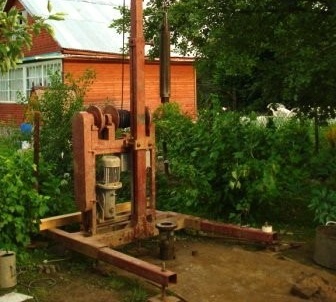
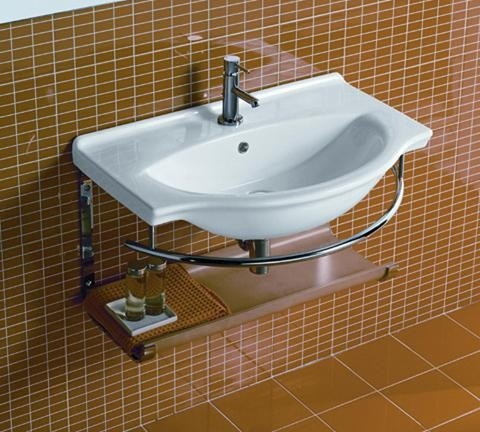
2 comments